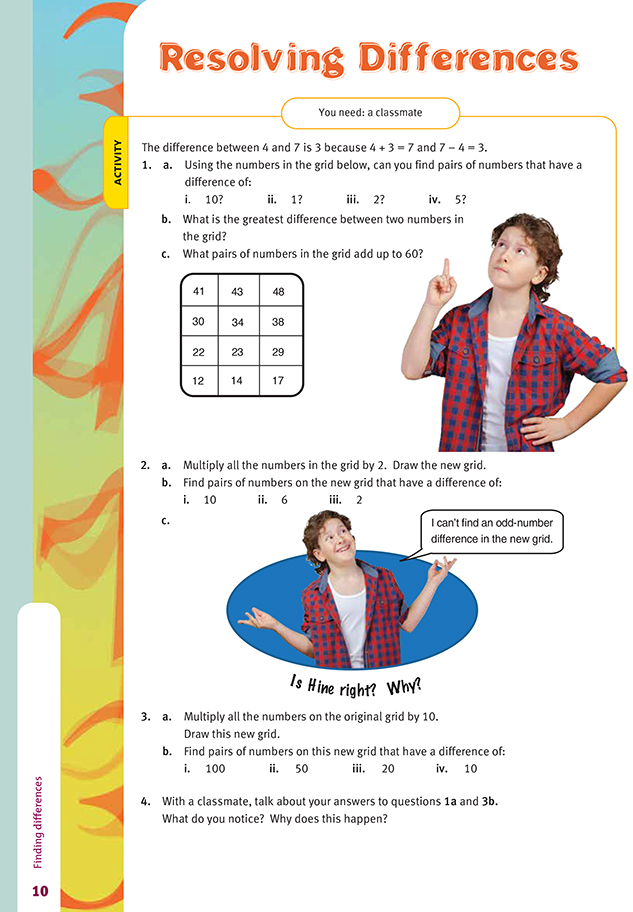This is a level 2 number link activity from the Figure It Out series. It relates to Stage 5 of the Number Framework.
A PDF of the student activity is included.
Click on the image to enlarge it. Click again to close. Download PDF (511 KB)
find the difference between two numbers
A classmate
FIO, Link, Number, Book One, Resolving Differences, page 10
Many students have only seen subtraction in “take-away” contexts where a subset is separated from a set. This activity focuses on differences. Difference contexts may be recorded as subtraction equations, but their actual purpose is to compare two sets. No separation has to occur.
In difference situations, it doesn’t matter if you ask for the difference between 4 and 7 or between 7 and 4, the result is still 3. Note that the only subtraction recording that suits either of these scenarios is 7 – 4 = 3. This means that while the order of choosing the numbers in question 1 does not matter, if students record these quantities in a subtraction equation, they will have to write the larger quantity first.
Question 2c revisits the property of even numbers that is developed on pages 2 and 3 of the students’ book. All even numbers have a prime factor of 2. All the numbers in the grid have been multiplied by 2, so they must be even.
Question 4 is asking students to see the connection between the grids. If each of the numbers in the grid has been multiplied by 10, the differences, though 10 times greater than those in question 1, must still be in the same position on the grid.
Answers to Activity
1. a. i. 48 and 38; 22 and 12
ii. 30 and 29; 23 and 22
iii. 43 and 41; 14 and 12
iv. 48 and 43; 43 and 38; 34 and 29; 22 and 17; 17 and 12
b. 36 (the difference between 48 and 12)
c. 48 and 12; 38 and 22; 43 and 17
2. a.
b. i. 96 and 86; 86 and 76; 68 and 58; 44 and 34; 34 and 24
ii. 82 and 76; 34 and 28
iii. 60 and 58; 46 and 44
c. Yes. They are all even numbers, so any differences are also even (even – even = even). (All even and odd numbers, when multiplied by 2, are even.)
3. a.
b. i. 480 and 380; 220 and 120
ii. 480 and 430; 430 and 380; 340 and 290; 220 and 170; 170 and 120
iii. 430 and 410; 140 and 120
iv. 300 and 290; 230 and 220
4. Answers will vary. The answers in 1a are similar to those in 3b except for the zeros at the end. This is because the new numbers in 3b are 10 times larger than those given in 1a.


